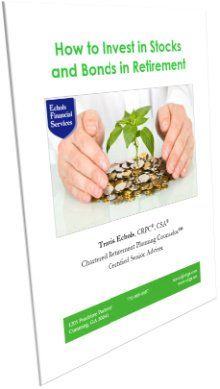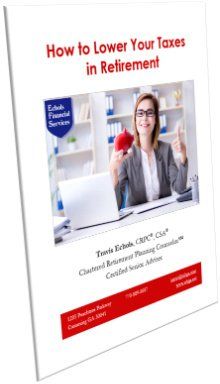Three Steps to Election-Proof Your Retirement

Are you wondering about the impact of the
2020 election results on your retirement? If so, you are not alone. The two political parties are greatly polarized. While the Democrat party has moved further toward ethno-centric socialism, the Republican party has moved further toward nationalistic populism. The difference in the two parties’ goals for our country is wider than ever. Sign up to receive my free monthly email articles on retirement planning--no cost, no obligation . |
How much should the upcoming election affect your financial decisions?
Should you plan for one outcome or another? Should you change your retirement plans based on what you think will happen? Should you change your portfolio now, or after you know who wins, or not at all?
Here is a breakdown of the S&P 500 (large cap U.S. stock) index based on the parties in office within the last 50 years (1970-2019) according to BTN Research:
- +17.5% per year (total return) under a Democratic President and a Republican-led Congress,
- +5.4% per year under a Republican President and a Congress controlled by the Democrats.
- +12.3% per year when the White House and Congress were controlled by the same political party.
- +10.8% per year when the House and the Senate were controlled by different parties, as is the case in 2020 (regardless of which party is in the White House)
Let me warn you to be careful with data such as this. As I’ve written in the past, other economic factors usually play a greater role in stock market returns than the political affiliation of government leaders.
Also, the policies enacted by one party can greatly impact the economy inherited by another party. With that said, ultimately, without doubt, politics plays a huge role in the prosperity of a nation and its people. See my article, "America Politics and Your Personal Prosperity".
Regarding the 2020 election, the economists I follow think that if Democrats take control of the two chambers of Congress and the Presidency, taxes will be raised, and American energy production will be negatively impacted. And that is just a start.
As for taxes, it’s not just corporate and personal marginal income tax rates that may change. Democrats are promising to raise capital gains taxes while President Trump is talking about lowering them and further reducing ordinary income taxes.
Any of these actions promised by Democrats, if enacted, would have a chilling affect on company profits (hence stocks) and the economy. We can hope that even if Democrats did win big and implement these policies, their negative affect would be short-lived as a severe backlash toward more fiscally responsible free-market policies would be reflected in the Congressional elections results of 2022. They are also likely to inherit a sharp COVID-19 recovery back toward the strong Trump economy before the virus.
A Trump reelection, on the other hand, may spark massive riots as in the 60's, which was not good for stocks.
With all these headwinds, there are strong tailwinds too, like a massive productivity boom being observed that indicates 2021 could be a great year for stocks.
After the election, you will be able to look back with 20/20 hindsight. My article " I wish I had done that
" addresses how to think clearly about decision-making and outcomes.
Here are three steps that will help you have confidence amidst the uncertainty of a politically charged election year.
1. Ask the right questions
Based on my comments above, I do think questions about the 2020 election results are relevant. What you should do to prepare, however, depends on your personal financial goals and timeline.
- Are you already retired?
- Are you close to retirement?
- Will you need to take withdrawals from your portfolio?
- Are you already taking withdrawals from your portfolio?
- Are those withdrawals sufficient to meet your needs?
- Are those withdrawals sustainable for life, or do you risk running short if a worse-case scenario unfolds?
- Do you have a plan if a worse-case scenario unfolds?
You can’t allow your long-term goals to be sabotaged over speculations and worries about current events. Make a plan that addresses your long-term goals with a look at historical evidence over long periods. Keep you focus on your long-term goals, with various contingent scenarios (which may or may not materialize) in mind.
2. Put away your crystal ball

Warren Buffet said, “The only value of stock forecasters is to make fortune tellers look good.”
If you’re thinking about cashing out your portfolio now and getting back in the market later when “the coast is clear”, you are not thinking realistically.
The short-term moves of the market are unknowable. To be successful with this strategy you must not only outguess millions of investors when to get out, but also when to get back in. The odds of doing this successfully are slim and the approach is more likely to backfire.
Many who try this, sell at the wrong time and then find themselves paralyzed, sitting in cash on the sidelines during the markets' sudden and tremendous upswings, which makes it increasingly harder for them to buy back in.
By the way, if an advisor has such predictive powers, they would not be spending their time helping
you. They would be on their private island enjoying the ocean breeze. 😊
You also don't want to wait until the market gets crazy to adjust your portfolio to its proper balance, for a host of reasons. You need to have your portfolio properly allocated before any craziness begins.
Of course, rebalancing your portfolio helps you stay on track as your investment mix drifts with changing prices. Rebalancing naturally employs the strategy of buying low and selling high as you make these adjustments.
To learn more about the 12 key principles of investing we use at Echols Financial Services, download my free Investment Philosophy PDF Guide .
3. Think time, not timing
After you have clearly identified when you need your portfolio to produce income, and how much, you can then decide how best to invest those assets to achieve those goals.
Usually, you need only a small portion of your portfolio for short-term needs. And that portion of your portfolio should not be in stocks. That portion should be in something stable so you can remain confident during the constantly changing movements of the stock market.
If you are in or nearing retirement, this portion outside the stock market is usually larger depending on factors such as your time horizon, other available income sources, investment withdrawal needs, and the current valuations of stocks and bonds at the time. To learn more, sign up for my free PDF Book,
How to Invest in Stocks and Bonds in Retirement
.
We call this more stable portion of your retirement assets your war chest . Having this war chest of cash and bonds allows you to know your short term needs can be met and allows the long-term growth (stocks) portion of your portfolio the time it needs to deliver higher returns without being sold during market disruptions.
For younger investors who are saving for retirement, it usually makes sense to invest heavily in stocks. If the market falls, great news: you are buying more shares at lower prices.
But if you are in or nearing retirement, growth should not be your only goal. You need to also think safety, preservation, and distribution of a reliable lifetime income. This requires a different way of investing and a change in mindset.
Market timing, speculation, and betting your retirement savings on the election results will not likely serve you well.
What you need is a plan that gives you confidence that your retirement is secure no matter who wins the election.
To learn more about how to withdraw a lifetime income from your portfolio, signup for my free PDF book, How to Retire Forever on Your Investments .


Travis Echols , CRPC®, CSA
Receive free Social Security Guide by email




Investment Advisory Services offered through JT Stratford, LLC. JT Stratford, LLC and Echols Financial Services, LLC are separate entities.











